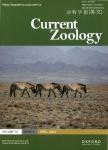Assessing feeding competition between lake whitefish Coregonus clupeaformis and round whitefish Prosopium cylindraceum
Assessing feeding competition between lake whitefish Coregonus clupeaformis and round whitefish Prosopium cylindraceum作者机构:Axelrod Institute of Ichthyology and Department of Zoology University of Guelph Faculty of Architecture Landscape and Design University of Toronto Pacific Biological Station Fisheries and Oceans Canada Golder Associates Fisheries and Wildlife Department and Oregon Hatchery Research Center Oregon State University
出 版 物:《Current Zoology》 (动物学报(英文版))
年 卷 期:2010年第56卷第1期
页 面:109-117页
核心收录:
基 金:part of a large collaborative project (Whitefish Interactions with Nuclear Generating Stations WINGS) involving the Chippewas of Nawash First Nation the University of Guelph Bruce Power Inc.and Ontario Power Generation
主 题:Lake Huron Diet Feeding tactics Seasonal variation Invasive species
摘 要:We collected lake whitefish Coregonus clupeaformis and round whitefish Prosopium cylindraceum from the main basin of Lake Huron and Georgian Bay in the Laurentian Great Lakes of North America to investigate details of diet and feeding tactics of these species in different seasons. Lake whitefish supports important commercial fisheries in Lake Huron and both species make use of habitats near the Bruce Nuclear Power Development, on the eastern shore of Lake Huron. Most fish of both species showed generalist feeding behavior, but some lake whitefish appeared to show specialist prey selection. The invasive spiny water flea Bythotrephes longimanus was an important component of the diet of both species. There was considerable dietary overlap between the whitefish species, but the ecological implications of these dietary overlaps are mitigated by the fact that dominant prey species differed in most seasons. We conclude that the potential for ecologically significant interactions between lake whitefish and round whitefish resulting from competition for similar benthic food resources in the main basin of Lake Huron is probably low [Current Zoology 56 (1): 109-117, 2010].



